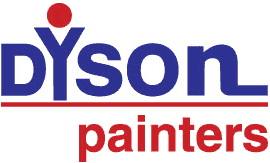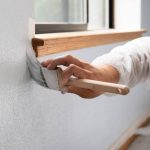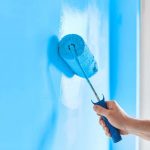If you’re planning to give your home a fresh coat of paint, it’s essential to have a good idea of the costs involved. This comprehensive cost guide has got you covered, providing you with all the information you need to plan a budget for your house painting project.
Whether you’re planning to hire professional house painters in Hobart or take on the job yourself, this guide will give you a better understanding of the expenses you can expect. From the cost of paint to labour fees, we’ll break down all the components that make up the total cost of house painting. Read on to make an informed decision.
What to Expect in an Exterior House Paint Job?
The exterior of your home is the first thing people see when they visit your property, so it’s important to make a good impression. When you hire house painters to paint the exterior of your home, the following tasks are typically included in the job:
- Power washing the exterior walls to remove dirt, grime, and any loose paint
- Scraping off any loose or peeling paint
- Caulking gaps and cracks in the walls
- Sanding the surfaces to ensure a smooth finish
- Priming any bare surfaces
- Painting the exterior walls with one or two coats of paint, depending on the surface and type of paint being used
What to Expect in an Interior House Paint Job?
When it comes to painting the interior of your home, house painters will typically take the following steps:
- Moving furniture and covering it with plastic sheeting
- Removing switch plates and outlet covers
- Cleaning the walls to remove dirt, dust, and grime
- Patching any holes or cracks in the walls
- Sanding the surfaces to ensure a smooth finish
- Priming any bare surfaces
- Painting the walls with one or two coats of paint, depending on the surface and type of paint being used
Types of Paints: Which One is the Cheapest?
Many different types of paints are available on the market, each with its own benefits and costs. Here are some of the most common types of paints used for house painting:
- Flat paint: This type of paint is the cheapest and is best used on ceilings or walls with imperfections.
- Eggshell paint: This type of paint has a slight sheen and is best used on walls that need to be cleaned frequently.
- Satin paint: This type of paint has a higher sheen than eggshell paint and is best used in high-traffic areas like hallways, bathrooms, and kitchens.
- Semi-gloss paint: This type of paint has a high sheen and is best used on trim, doors, and cabinets.
- Gloss paint: This type of paint has the highest sheen and is best used on surfaces that need to be durable and easy to clean, like doors and trim.
Factors to Consider for Roof Painting Costs
If you’re looking to paint your roof, there are several factors to consider that can affect the cost of the job. On average, you can expect to pay between $30 and $70 per hour.
Some factors include:
- Roof size: The larger the roof, the more paint and labour are required to complete the job.
- Roof pitch: The steeper the roof, the more difficult it is to work on, which can increase the cost of the job.
- Roof condition: If your roof is in poor condition, it may require additional preparation work, which can increase the cost of the job.
- Type of paint: Some types of roof paint are more expensive than others, which can affect the overall cost.
- Accessibility: If your roof is difficult to access, it may require special equipment like scaffolding or lifts, which can increase the cost of the job.
Which Factors Determine the Cost of House Painting?
The cost of painting a single-storey house in Hobart may range from $7000 to $25000. However, for an accurate estimate, you must consider the following factors:
House size: The size of the house is one of the most important factors when determining the cost of painting. Larger homes will require more paint and labour, increasing the overall cost.
Property’s age and condition: The age and condition of the property can also impact the cost of painting. Older homes may require more prep work, such as scraping and sanding, before painting can begin. Homes in poor condition may also require more repairs before painting can begin, which can add to the cost.
Materials: The type of paint and materials used can also impact the cost of painting. High-quality paint may cost more upfront but can result in a longer-lasting finish, which can save money in the long run. Other materials, such as primer and sealant, may also be necessary and can add to the cost.
Type of paint: The type of paint chosen can also impact the cost of painting. For example, oil-based paint tends to be more expensive than latex paint but may be more durable and longer-lasting.
Location: The location of the property can also impact the cost of painting. House painters in certain areas may charge more due to higher overhead costs, such as rent and labour.
House areas that need to be painted: The areas that need to be painted can also impact the cost. For example, painting the exterior of a house will typically cost more than painting the interior, as it requires more prep work and specialised equipment.
Accessibility: The accessibility of the property can also impact the cost of painting. If the property is difficult to access, such as a multi-story home or a home with challenging terrain, the cost may be higher due to the additional time and equipment needed.
Add-ons: Additional features, such as trim work or accent walls, can also add to the overall cost of painting. These extras require additional time and materials, which can increase the final cost.
Timeframe: The timeframe in which the painting needs to be completed can also impact the cost. If a property owner needs the painting job completed quickly, they may need to pay more for expedited services or hire additional painters in Hobart to get the job done on time.
Level of detail: The level of detail required can also impact the cost. If a property owner wants intricate designs or patterns painted, it will require more time and skill from the house painters, which can increase the cost.
Paint colour: The colour of the paint can also impact the cost. Some colours may require more coats or special preparation, which can add to the cost. Additionally, custom colours may be more expensive than pre-mixed colours.
Paint finish: The finish of the paint can also impact the cost. Glossy finishes tend to be more expensive than flat or matte finishes but can offer additional durability and resistance to wear and tear.
DIY Painting Costs
If you want to save money on house painting, consider doing it yourself. While this can be a cost-effective option, it’s important to consider the costs involved in a DIY painting project. Here are some of the costs you may incur:
- Paint and supplies: You’ll need to purchase paint, brushes, rollers, drop cloths, and other supplies to complete the job.
- Equipment rental: If you need to rent equipment, such as a power washer or scaffolding, it can add to the job’s cost.
- Time: DIY painting projects can take a significant amount of time, and if you’re taking time off work to complete the job, it can also result in lost wages.
- Mistakes: If you make any mistakes during the painting process, they can lead to additional costs to correct.
How Hiring Professional House Painters Reduces the Cost?
While hiring professional house painters may seem more expensive, it can help reduce costs in the long run. Here’s how:
- Time: Professional painters can complete the job in a fraction of the time compared to a DIY painter, which can save you time and money in the long run.
- Quality: They have the experience and equipment to ensure a high-quality finish, saving you money on future touch-ups or repairs.
- Efficiency: They know how to paint efficiently and minimise waste, which can help reduce the cost.
- Safety: Painting can be dangerous, and hiring professional house painters can help prevent accidents or injuries that can result in additional costs.
Can Painting Your Home Increase Its Resale Value?
Painting your home can be a great way to increase its resale value. A fresh coat of paint can help improve the appearance of your home, making it more attractive to potential buyers.
Here are some tips for using paint to increase your home’s resale value:
- Choose neutral colours: Neutral colours, like beige or grey, are more appealing to a wider range of buyers and can help make your home feel more spacious and welcoming.
- Focus on high-impact areas: Painting high-impact areas, like the front door or entryway, can help create a memorable first impression and make your home stand out from other properties on the market.
- Use high-quality materials: High-quality paint and materials can help ensure a long-lasting finish, which can be a selling point for potential buyers.
- Hire professional painters: Hiring professional house painters can help ensure a high-quality finish, which can be another selling point for potential buyers and increase the value of your home.
Book a Free Consultation Now!
Get a Free Quote From Dyson Painters in Hobart
Are you looking to transform the look of your home with a fresh coat of paint? Your search ends with Dyson Painters. We are a long-established painting company in Hobart with a solid reputation of over 50 years. Our team of skilled professionals is committed to delivering exceptional results and superior customer service.
We understand that every home and project is unique, which is why we offer customised solutions to fit your specific needs and budget. With years of experience and a dedication to quality, you can trust us to get the job done right.
Contact us today for a free quote and take the first step toward your dream home. Our team of expert house painters in Hobart stands by to answer any questions you may have and provide you with a comprehensive and accurate estimate.
Also Read:





